Hola amig@s de Hive, hoy quiero comentarles acerca de un mamífero originario de Sur y Centro América, me refiero al vermilinguo (lengua en forma de gusano), conocido comúnmente como oso hormiguero (aunque tiene otras denominaciones según el área geográfica donde se ubique: oso palmero, tamandúa o yumurí). Se compone de dos familias: Cyclopedidae y Myrmecophagidae
Hello friends of Hive, today I want to tell you about a mammal native to South and Central America, I am referring to the vermilion (worm-like tongue), commonly known as the anteater (although it has other names depending on the geographical area where it is located: palm bear, tamandua or yumuri). It is composed of two families: Cyclopedidae and Myrmecophagidae.
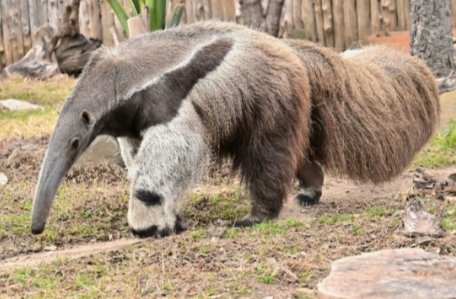
Foto tomada de Nezahualcoyotl/Photo taken from Nezahualcoyotl
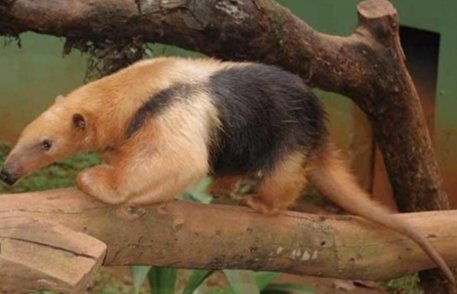
Foto tomada de Diario de Mallorca/Photo taken from Diario of Mallorca
Este animal muy peculiar es pariente cercano del armadillo y el perezoso. Su longevidad oscila alrededor de los 14 años. Es fácil distinguirlo debido a sus pequeñas orejas, su pelaje tupido, su cabeza prolongada con un hocico alargado y una diminuta boca, carece de dientes; sus garras afiladas le permiten excavar fácilmente y tiene una lengua cilíndrica, fina y pegajosa (de 60 centímetros de largo aproximadamente) con las que atrapa a sus presas. Hay especies que pueden llegar a medir 220 centímetros de largo, 60 centímetros de alto y pesar hasta 40 kilogramos.
This very peculiar animal is a close relative of the armadillo and the sloth. Its longevity ranges around 14 years. It is easy to distinguish it due to its small ears, its bushy fur, its long head with an elongated snout and a tiny mouth, it lacks teeth; its sharp claws allow it to dig easily and it has a cylindrical, thin and sticky tongue (approximately 60 centimeters long) with which it catches its prey. There are species that can measure up to 220 centimeters long, 60 centimeters high and weigh up to 40 kilograms.
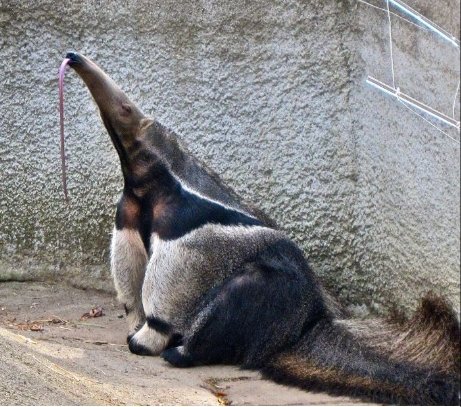
Foto tomada de Billiken/Photo taken from Billiken
Tiene un hábitat natural muy variado (desde bosques húmedos y secos hasta áreas pantanosas, sabanas y pastizales). Su dieta está compuesta básicamente de hormigas y termitas (llegando a consumir miles de estos insectos cada día) las cuales busca con su extremadamente desarrollado sentido del olfato.
It has a very varied natural habitat (from humid and dry forests to swampy areas, savannahs and grasslands). Its diet is basically composed of ants and termites (consuming thousands of these insects every day), which it searches for with its extremely developed sense of smell.
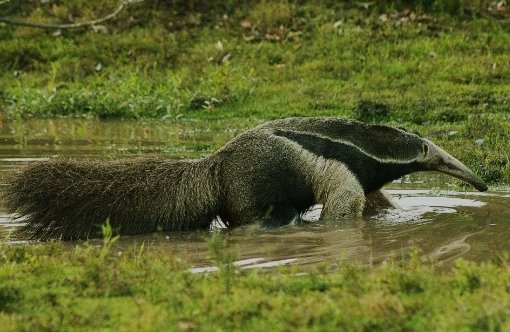
Foto tomada de Mongabay Latam/Photo taken from Mongabay Latam
Este animal es solitario, sólo se reúne con los de su especie en la etapa de apareamiento. Su proceso de gestación dura alrededor de 190 días dando lugar al nacimiento de una sola cría, la cual transcurre su primer año de vida en el lomo de su madre hasta que se independiza.
This animal is solitary; it only meets with its own kind during the mating stage. Its gestation process lasts about 190 days resulting in the birth of a single calf, which spends its first year of life on its mother's back until it becomes independent.
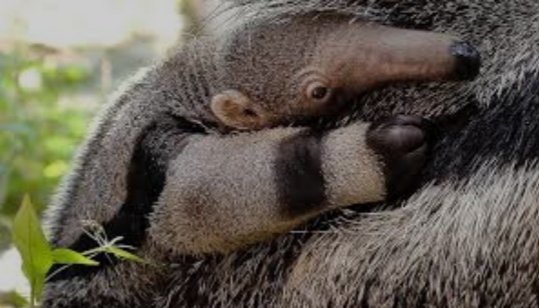
Foto tomada de 88.3 Radio Ciudad/Photo taken from 88.3 Radio Ciudad
Sin duda alguna, este es uno de los mamíferos más antiguos y extraños del planeta!
Undoubtedly, this is one of the oldest and strangest mammals on the planet!
Traducido por DeepL App/Translated by DeepL App.
Wow this is really a polite animal we found.
It is a very peculiar animal